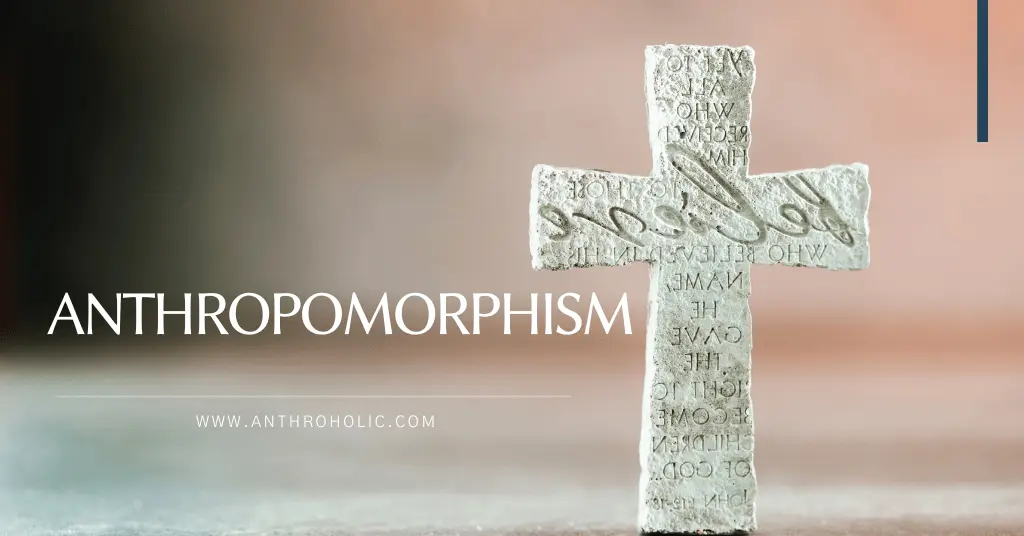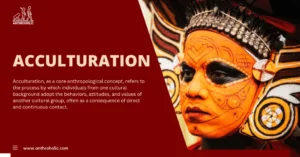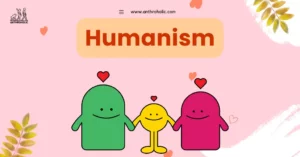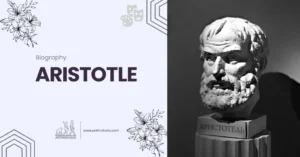AI Answer Evaluation Platform Live Now. Try Free Answer Evaluation Now
Anthropomorphism
Anthropomorphism, derived from the Greek anthropos (human) and morphe (form), is a ubiquitous psychological phenomenon where human characteristics are attributed to non-human entities, including animals, objects, and natural phenomena [1]. This human tendency to perceive the surrounding world in human terms spans a range of attributes, encompassing emotions, intentions, and cognitive faculties.

Brief History of Anthropomorphism
The anthropomorphic tendency is not a recent development but is deeply ingrained in the human psyche with roots in prehistory. The evidence for early anthropomorphism is found in prehistoric art, where cave paintings often depict animals and nature in human-like forms. Anthropomorphism’s historical pervasiveness has been postulated to be a cognitive byproduct of our species’ evolution as a highly social organism, where the attribution of intentionality to our surroundings could have had survival advantages [2]
This human tendency to anthropomorphize has permeated throughout human history, significantly influencing cultural narratives, spiritual beliefs, and societal norms. Anthropomorphism became a key element in ancient mythology, where gods often took human form or exhibited human emotions. From the Greek gods’ capricious natures to Egyptian deities with human bodies and animal heads, the use of anthropomorphism is evident [3]
Anthropomorphism: A Universal Human Tendency
Evidence from Prehistoric Art
Anthropomorphism has been a fundamental aspect of human cognition and expression since prehistoric times. This inclination is particularly evident in ancient art, providing significant insights into early human thought processes. One of the most notable instances is the “Lion Man” figurine discovered in the Hohlenstein-Stadel cave in Germany, dated around 40,000 years ago, representing a humanoid figure with a lion’s head [4]. This artifact reflects a cognitive leap where humans started perceiving and portraying non-human entities with human characteristics, indicating the dawn of symbolic thought and abstract thinking.
Another remarkable instance of anthropomorphism in prehistoric art is the cave paintings in Lascaux, France. These paintings, approximately 17,000 years old, depict a variety of animals, some with human-like attributes, underscoring early humans’ propensity to project their perception onto the natural world.
Anthropomorphism in Mythology and Folklore
Anthropomorphism has also shaped human spirituality and cultural narratives across various civilizations. In Greek mythology, the gods were not only anthropomorphic but also behaved much like humans, possessing a wide range of emotions and susceptibilities. Gods such as Zeus and Aphrodite were depicted with human physicality and emotional qualities like jealousy, love, and wrath.
Similarly, in Hindu mythology, deities often exhibit anthropomorphic features, the most notable being Lord Ganesha, depicted with an elephant’s head on a human body. This anthropomorphic representation communicates unique symbolic meaning and theological philosophy.
Folklore around the world also frequently employs anthropomorphism. For instance, African folk tales often feature animals like Anansi the spider or Tortoise demonstrating human-like intelligence and emotions.
Thus, anthropomorphism, as evidenced in prehistoric art and global mythology and folklore, is a universal human tendency, reflecting our innate desire to comprehend the world in human terms.
Anthropomorphism Across Cultures
Eastern Versus Western Perspectives
The manifestation of anthropomorphism varies widely across cultures. In Western cultures, the anthropomorphic portrayal of animals and nature often serves as a tool for moral instruction, such as in Aesop’s fables, where animals exhibit human virtues and vices.
Eastern cultures, such as in Hindu and Buddhist traditions, also frequently employ anthropomorphism. Yet, it often carries a deeper spiritual significance, symbolizing divine attributes. For example, the Hindu deity Ganesha, portrayed with an elephant head, embodies wisdom and obstacle removal [5].
Anthropomorphism in Indigenous Tribes
Anthropomorphism also holds profound importance among indigenous tribes worldwide. For instance, the Yoruba tribe in Africa attributes human characteristics to their gods and the natural world, a perspective that shapes their spiritual beliefs and societal norms.
Similarly, Native American cultures also display rich anthropomorphic traditions. They often personify natural entities like rivers, mountains, or animals, which influences their relationship with the natural world and environmental stewardship.
Anthropomorphic Deities in Various Religions
Anthropomorphism is a pervasive element in global religious traditions. Many gods in ancient Egyptian religion exhibit anthropomorphic features, combining human and animal forms. In Christianity, while God is deemed transcendent, anthropomorphic language is frequently employed in the Bible to describe divine emotions and actions.
Thus, anthropomorphism, being a universal human tendency, manifests in various forms across different cultural and religious landscapes, enriching our understanding of diverse human perceptions and experiences.
Anthropomorphism in the Modern World
Anthropomorphism in Children’s Literature and Animation
Anthropomorphism plays a prominent role in contemporary children’s literature and animation, shaping the ways younger generations perceive and understand the world. It helps explain complex ideas or moral lessons through characters children can relate to, such as the classic “Peter Rabbit” by Beatrix Potter, where animals embody human characteristics. Similarly, animated movies like Disney’s “The Lion King” or “Zootopia” employ anthropomorphic animals to portray human societies and address themes like identity, morality, and social conflicts.
Anthropomorphism in Advertising and Branding
Advertising and branding, too, harness the power of anthropomorphism. Businesses create anthropomorphic mascots or characters to foster a sense of connection and familiarity with customers. For instance, the Michelin Man or Tony the Tiger represent their respective brands, embodying human characteristics to convey brand values and appeal to consumers.
It’s also utilized in product design where inanimate objects are given human-like features, known as “product anthropomorphism”. This can help users engage more naturally with the product, enhancing the user experience.
The pervasiveness of anthropomorphism in children’s literature, animation, advertising, and branding illustrates its effectiveness as a cognitive tool for communication and emotional engagement, reflecting its central role in the way we navigate our modern world.
Technology and Anthropomorphism
Anthropomorphism in Artificial Intelligence
Anthropomorphism plays a significant role in the realm of artificial intelligence (AI). By attributing human-like characteristics to AI systems, developers aim to create a more intuitive and effective interaction between humans and technology. AI personal assistants, such as Apple’s Siri or Amazon’s Alexa, are designed to understand and respond in human-like ways, creating an illusion of intelligence and empathy.
The application of anthropomorphism in AI is not merely cosmetic. It serves a practical purpose by making the technology more accessible and less intimidating, fostering user engagement and acceptance. Furthermore, anthropomorphized AI can enrich user experience by providing personalized responses, demonstrating an understanding of human emotion, or even exhibiting a sense of humor.
Robots and Anthropomorphic Design
The field of robotics also extensively employs anthropomorphism. From humanoid robots like Hanson Robotics’ Sophia to pet-like robots such as Sony’s Aibo, anthropomorphic design helps bridge the gap between humans and machines, enabling more natural interaction [6]. Anthropomorphic design in robotics is guided by the concept of the “uncanny valley,” which posits that entities appearing almost, but not exactly, human can cause discomfort or revulsion. Thus, the challenge lies in striking a balance between relatability and non-human uniqueness. These examples underline the centrality of anthropomorphism in contemporary technological design, reflecting our persistent desire to humanize our creations and foster connection, even in an increasingly digitized world.
Conclusion: Anthropomorphism and the Future
Future Research Directions
Anthropomorphism’s extensive application across various fields opens avenues for future research. For instance, studying anthropomorphism’s impact on human-machine interaction can provide insights into designing more effective, user-friendly AI systems and robots.
Understanding anthropomorphism in an ecological context is another interesting direction, potentially influencing how we perceive and interact with the natural world, bearing implications for environmental stewardship. Additionally, how anthropomorphism shapes our engagement with entities like corporations or nations can have meaningful implications for social and political science.
Ethical Considerations
As anthropomorphism continues to influence our world, several ethical questions arise. For instance, to what extent should AI and robots be humanized? At what point does anthropomorphism deceive or manipulate, especially in contexts like advertising or AI?
In the realm of animal rights, does anthropomorphism contribute to a more empathic understanding of animals or rather distort our perception, leading us to overlook their true nature and needs?
As we continue to anthropomorphize our world, it is crucial to navigate these questions thoughtfully, balancing our innate desire to humanize with respect for the inherent value and autonomy of non-human entities.
The exploration of anthropomorphism offers a fascinating journey into the depths of human cognition, cultural expression, and technological innovation. It continues to enrich our understanding of the world, embodying the creativity and adaptability that define us as a species.
References
[1] Epley N, Waytz A, Cacioppo JT. On seeing human: a three-factor theory of anthropomorphism. Psychol Rev. 2007 Oct;114(4):864-86. doi: 10.1037/0033-295X.114.4.864. PMID: 17907867. https://pubmed.ncbi.nlm.nih.gov/17907867/
[2] Guthrie, S. E. (1993). Faces in the Clouds: A New Theory of Religion. Oxford University Press.
[3] Versnel, H. S. (1990). Ter Unus: Isis, Dionysos, Hermes: Three Studies in Henotheism. In Studies in Greek and Roman Religion (Vol. 6). Brill.
[4] Conard, N. J. (2003). Paleolithic Ivory Sculptures from Southwestern Germany and the Origins of Figurative Art. Nature, 426(6968), 830-832.
[5] Brown, R. L. (1991). Ganesha: Lord of Obstacles, Lord of Beginnings. Oxford University Press.
[6] Breazeal, C. (2003). Toward sociable robots. Robotics and Autonomous Systems, 42(3-4), 167-175.




